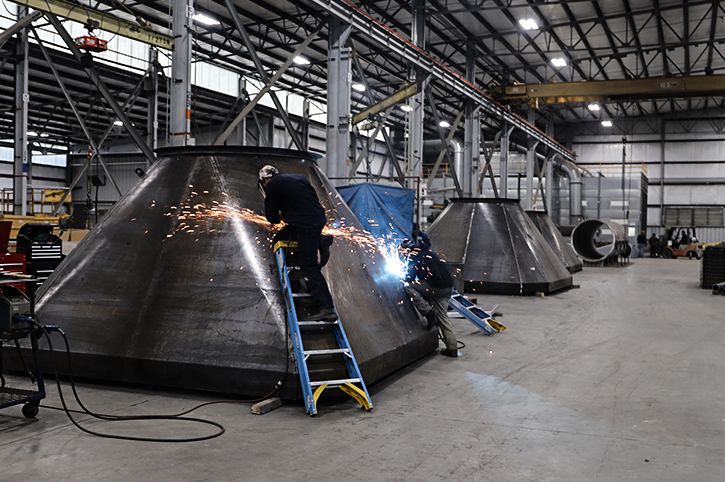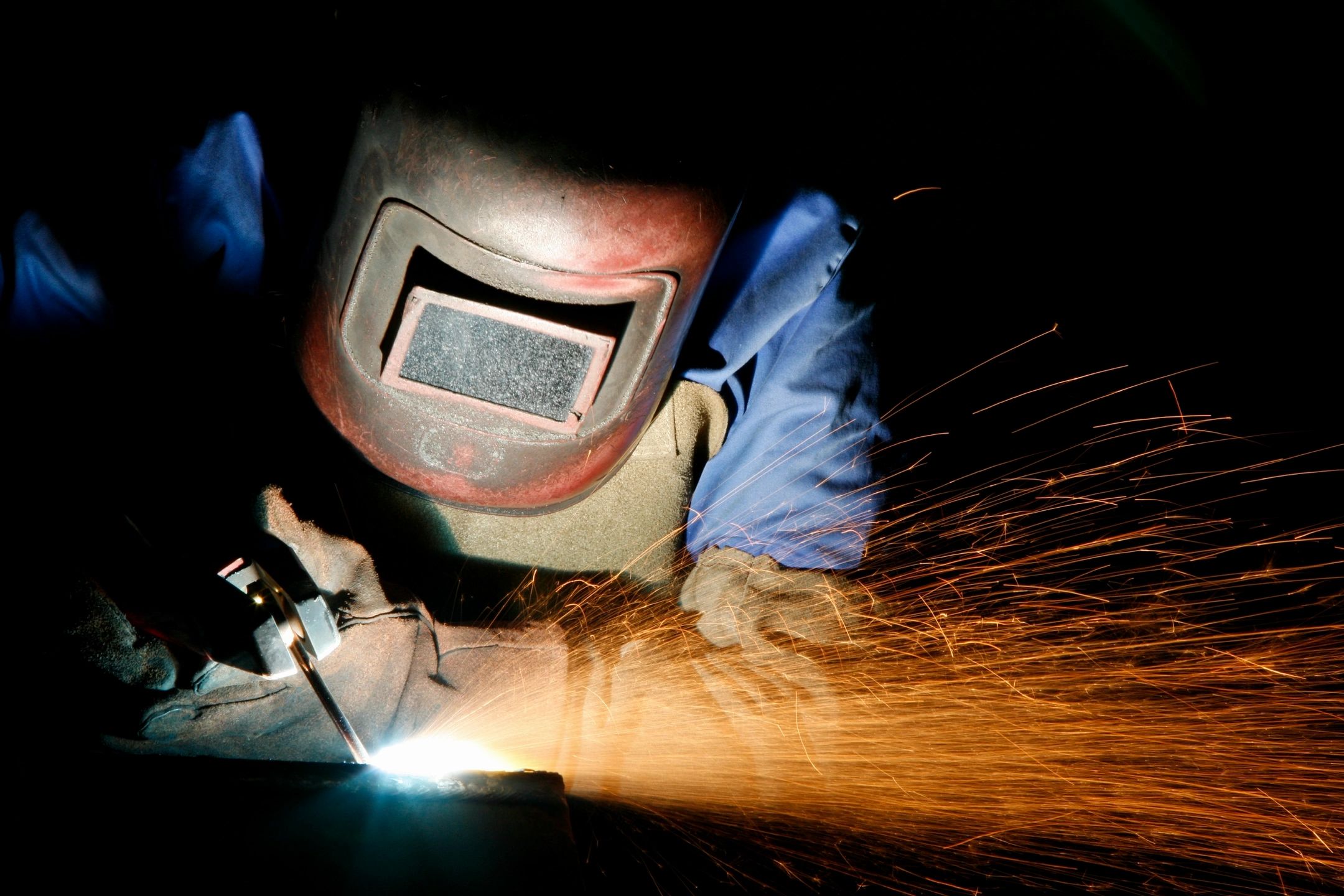Usual Welding Repair Work Issues and Just How to Address Them Successfully
Welding repairs commonly experience a variety of issues that can threaten the integrity of the end product. Usual troubles consist of inadequate penetration, porosity, and imbalance, to name a few. Each defect offers unique challenges that need details strategies for resolution. Understanding these concerns is essential for welders aiming to enhance their end results and skills. This conversation will certainly check out these usual welding repair issues and efficient approaches to address them.
Insufficient Infiltration
Inadequate infiltration takes place when the weld metal falls short to totally fuse with the base product, resulting in weak joints and prospective architectural failures. This concern typically originates from not enough heat input, inaccurate electrode angle, or improper welding speed. Welders might run into poor penetration because of a miscalculation of the necessary parameters for a particular product density or kind. Furthermore, contamination on the base material's surface can impede effective bonding, exacerbating the issue. To attend to poor infiltration, welders should guarantee ideal settings on their devices and preserve a clean job surface area. Routine examination of welds is advised to identify any kind of deficiencies early, enabling prompt improvements and the prevention of jeopardized architectural stability in bonded settings up.
Porosity
Porosity is a typical problem in welded joints that manifests as tiny gas bubbles caught within the weld steel. This problem can endanger the honesty of the weld, causing reduced toughness and prospective failure under tension. Belgrade Fabrication. Porosity generally emerges from contamination, moisture, or improper welding techniques, which enable gases to get away right into the molten weld swimming pool. To resolve porosity, welders ought to guarantee correct surface prep work, maintain a clean working environment, and utilize appropriate welding parameters. Additionally, picking the right filler product and protecting gas can mitigate gas entrapment. Routine inspection and screening of welds can aid identify porosity early, assuring timely rehabilitative actions are taken, consequently maintaining the quality and dependability of the welded framework
Misalignment
Misalignment in welding can develop from numerous factors, including improper configuration and thermal growth. Comprehending the root triggers is necessary for reliable resolution. Numerous correction strategies are offered to straighten parts and guarantee architectural honesty.
Sources of Imbalance
Welding imbalance often comes from a range of underlying concerns that can jeopardize structural integrity. One key reason is inappropriate fit-up of elements prior to welding, which can lead to voids and irregular surface areas. Variants in thermal expansion during the welding procedure can also lead to distortion, specifically if the materials being signed up with have different coefficients of growth. In addition, inadequate fixturing and securing may stop working to hold elements securely in location, bring about activity during welding. Inadequately maintained tools, consisting of welding machines and devices, might present disparities in the weld bead, further adding to imbalance. Ultimately, operator error, originating from not enough training or experience, can likewise play a significant duty in creating misaligned welds.
Correction Strategies Offered
Addressing imbalance properly needs a mix of rehabilitative techniques customized to the details problems at hand. One common approach is making use of jigs or fixtures to hold parts in the proper placement throughout welding, making sure constant alignment. Furthermore, pre-heating the products can assist decrease distortion and boost fit-up. For significant misalignment, mechanical adjustment techniques, such as making use of hydraulic jacks or clamps, can be utilized to correct the placement before welding. Post-weld warm therapy may additionally be needed to ease anxieties brought on by misalignment. Finally, careful evaluation and adjustment during the arrangement stage can stop misalignment concerns from ending up being substantial problems, promoting a smoother welding process and enhancing overall structural integrity.
Distortion
Distortion is a common challenge in welding that can occur from numerous aspects, consisting of unequal heating & cooling. Comprehending the causes of distortion is essential for applying effective avoidance methods. Resolving this issue not just improves structural integrity but likewise boosts the total top quality of the weld.
Reasons for Distortion
When subjected to the intense warmth of welding, materials often go through changes that can lead to distortion. This sensation largely occurs from thermal growth and tightening during the welding procedure. As the weld location warms up, the product increases; upon cooling, it acquires, which can develop internal tensions. Furthermore, unequal home heating throughout a workpiece can intensify these anxieties, causing bending or bending. The sort of material also plays a substantial duty; metals with differing thermal conductivity and coefficients of growth may react in different ways, bring about unpredictable distortions. Moreover, poor joint layout and insufficient fixturing can contribute to imbalance during welding, increasing the possibility of distortion. Understanding these reasons is important for reliable welding repair work and prevention methods.
Avoidance Techniques
Effective prevention techniques for distortion throughout welding concentrate on controlling heat input and making certain correct joint layout. Keeping a consistent warmth input aids to reduce thermal growth and tightening, which can bring about distortion. Using methods such as preheating the workpiece can likewise reduce the temperature level gradient, advertising uniform heating. Furthermore, choosing ideal joint styles, such as T-joints or lap joints, can improve security and minimize anxiety focus. Executing correct fixturing to secure the work surfaces in location better aids in preserving positioning during the welding process. Staggered welding sequences can distribute heat extra evenly, protecting against localized distortion. By applying these approaches, welders can Clicking Here significantly reduce the probability of distortion and improve the overall quality of their welds.
Fracturing
Splitting is a common problem come across in welding fixings, often resulting from numerous variables such as inappropriate air conditioning rates, material selection, kelly welding or insufficient joint preparation. The occurrence of splits can substantially endanger the stability of the weld, causing prospective failures throughout procedure. To address this problem, welders must initially analyze the root causes, making certain that products are suitable and suitably picked for the details application. Furthermore, regulating the cooling rate throughout the welding process is vital; rapid cooling can induce tension and bring about breaking. Appropriate joint layout and preparation also add to reducing the threat. Executing these techniques can enhance weld quality and resilience, inevitably reducing the chance of splitting in finished weldments.

Incomplete Blend
A significant issue in welding repair work is incomplete fusion, which occurs when the weld steel does not sufficiently bond with the base material or previous weld passes - Montana Mobile Welding and Repair. This flaw can cause weaknesses in the joint, potentially compromising the stability of the bonded framework. Factors contributing to insufficient combination include inadequate warm input, improper welding technique, and contamination of the surfaces being signed up with. To address this issue properly, welders need to guarantee appropriate pre-weld cleansing and surface area preparation, as well as change their welding specifications to achieve appropriate penetration and combination. Normal assessment throughout the welding procedure can additionally assist identify insufficient blend early, permitting prompt restorative procedures to improve the overall quality of the weld
Overheating
While welding repairs can boost structural honesty, overheating provides a considerable challenge that can lead to material destruction. Excessive warmth throughout welding can modify the mechanical properties of metals, leading to minimized toughness, boosted brittleness, and bending. This phenomenon is specifically vital in high-stress applications where structural integrity is extremely important. Recognizing overheating can include visual assessments for staining or distortion, along with keeping track of temperature level during the welding process. To mitigate the dangers linked with getting too hot, welders should use ideal methods, such as controlling warmth input, readjusting traveling rate, and utilizing suitable filler products. Furthermore, executing pre- and post-weld heat treatments can help recover material buildings and improve the general top quality of the repair, guaranteeing long-lasting efficiency and security.
Often Asked Inquiries
What Are the Usual Indications of a Welding Defect?

How Can I Evaluate My Welds for High quality?
To check welds for high quality, one can utilize visual inspections, ultrasonic testing, and radiographic methods. Each technique guarantees architectural stability, recognizes problems, and confirms adherence to specified standards, ultimately improving the reliability of the welded joints.
What Safety Safety Measures Should I Take While Welding?
When welding, one ought to prioritize safety and security by wearing ideal personal protective tools, guaranteeing correct ventilation, go to this web-site securing combustible materials away, maintaining a tidy workspace, and recognizing environments to avoid accidents and injuries.
Can I Repair a Weld Without Redoing the Entire Joint?
Fixing a weld without remodeling the entire joint is feasible, depending on the damage (Montana Mobile Welding and Repair Welding). Techniques such as grinding, including filler product, or using a welding process can effectively deal with certain defects while maintaining the bordering framework
What Equipment Are Crucial for Effective Welding Services?
Necessary tools for effective welding repairs include a welding device, cable brush, grinder, safety equipment, clamps, and filler products. Each tool plays an essential function in ensuring top quality and safety during the repair service process. Porosity generally occurs from contamination, wetness, or incorrect welding strategies, which enable gases to run away into the molten weld swimming pool. Improperly maintained equipment, including welding makers and tools, may introduce inconsistencies in the weld bead, more contributing to misalignment. When subjected to the extreme warm of welding, products often go through changes that can lead to distortion. Splitting is a common problem encountered in welding repairs, usually resulting from different variables such as inappropriate air conditioning prices, material choice, or poor joint prep work. A considerable concern in welding repair services is incomplete fusion, which takes place when the weld steel does not effectively bond with the base product or previous weld passes.